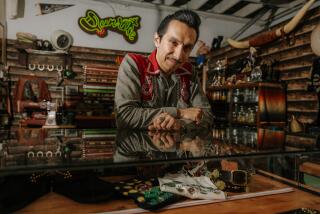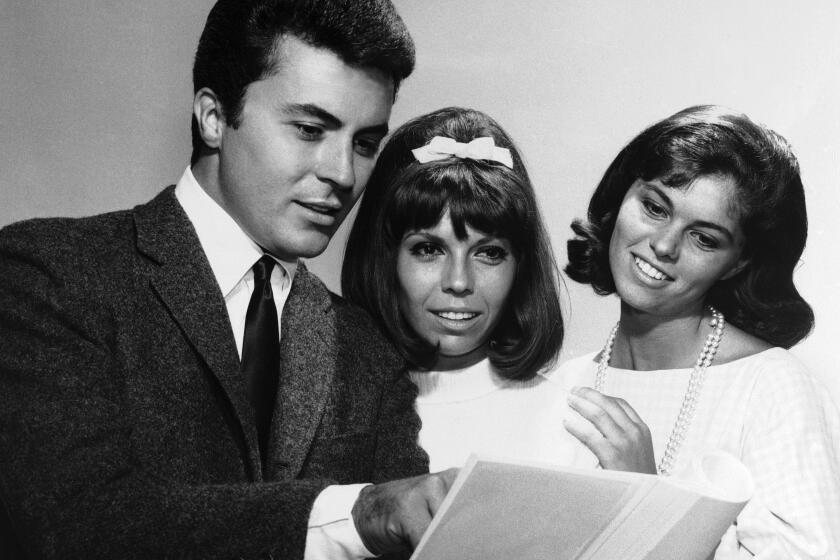‘12 Years a Slave’ costume designer Patricia Norris discusses hurdles
Based on a 19th century autobiography, “12 Years a Slave” is the true story of a free black man, Solomon Northup, abducted and sold into slavery in the emotionally vicious yet visually beautiful world of the antebellum South. Director Steve McQueen wanted the film to be “very real,” says longtime costume designer Patricia Norris, and yet little documentation of slave clothing exists. With her five decades of experience, Norris created the look for Solomon (Chiwetel Ejiofor), Patsey (newcomer Lupita Nyong’o) and other slaves along with their more sartorially splendid plantation owners and the free men and women of the North — black and white alike.
I doubt there was much pictorial reference on the slave period portrayed in the film?
There were etchings but it was almost like a deep, dark secret. And the etchings in general were of happy, plumped-up slaves, underneath a tree, eating their lunch. I figured those were done by white guys from New York. I actually got more from reading, and I read quite a lot of books. Still, even then, you had to pretty much draw your own conclusions. So you went forward from how they were brought here — naked.
VIDEO: Highlights from the Envelope Screening Series
Once you get over the horror of it and decide just to do the clothes — to detach yourself emotionally — it becomes a history lesson. There were ships that would come into New Orleans and some of them had big music organs on them and they’d make the slaves that were to be sold dance; there was an ad I saw about the “Happiest Slave.” The slaveholder’s attempt at some psychotic advertising, I suppose.
Michael Fassbender as plantation owner Edwin Epps and Brad Pitt as an abolitionist carpenter are miles apart morally as well as in their clothing.
We wanted Epps to be a bit more romantic in dress; we did it with the long, romantic sleeves. Epps was rich, even though he was so strange, and we tried to show the differences and nuances in class between white people, and whites and blacks through their dress. Brad’s character was from Canada, and with Brad you have to guess correctly because he comes in for fittings at the very last minute.
So with the slaves’ clothes, you had to base them on your best guess-timations?
My best guess-timations were you take white people, see what they were wearing and you figure those clothes became castoffs. So with the slaves, you’d dress them as if they were for 20 to 30 years before. That’s why I used the mock-empire waists on them, like for Patsey. Granted, everybody sewed, but whoever bought the slaves were responsible for clothing them. And when they were being sold, I figured maybe they just gave them the simplest cotton sheaths. With the men, they dressed them up to look good, unless they were being auctioned naked. When they changed plantations, the clothes would wear out and they’d get them new ones.
INTERACTIVE: Best and worst Oscar moments since 2008
The choice of the fabric, which looks like undyed cotton and linen, actually had a kind of organic natural beauty to it in its new state. How did you age the slave clothes — what was your process?
Constant. We had a wonderful chap who is not only a brilliant milliner but also a great ager and dyer. We had to build five or six shirts for some, especially Chiwetel and then do a progressive aging of them. Washing them a lot starts the process. And you don’t want anything with any synthetic in it because they won’t take the dye. You almost start painting them with dye. Tugging at the fabrics to make it look bad, never ever ironing them. We used to wash 50 shirts and have them drying in the sun. It was very hard to keep the consistency of the badness. How long have they been at this plantation always became a question.
For the white characters did you make those costumes?
Some of them were made and then some I got out of England. There are not vintage shops of that period any longer, the clothes are just worn out. England does more period shows and in some costume houses you can probably go back to 1850 but you can’t go much further back. And the free blacks in the North dressed exactly the same as the white Northerners, because that was what was available there for them to wear.
How involved were the principal players in their costumes? And director Steve McQueen?
Most of the people were happy to let me do it and depend on me as a designer. And, I had a lot of research and I could talk my way out of anything (laughs). With Steve, he just wanted it to look real. I’d take pictures of fittings and when you’re filming out of town like that [in New Orleans] they’d bring in the actors so late it’s difficult to do unless you get it right early. Fortunately, everybody was very agreeable, you didn’t run into the guy from Hollywood. I spent the most time with Chiwetel because his timeline is over 12 years. You have five different plantations. You have to figure out if the guy on this plantation is going to be good or bad, will he give you clothes and where can you get clothes, this kind of thing. It got to be very interesting.
More to Read
Only good movies
Get the Indie Focus newsletter, Mark Olsen's weekly guide to the world of cinema.
You may occasionally receive promotional content from the Los Angeles Times.










